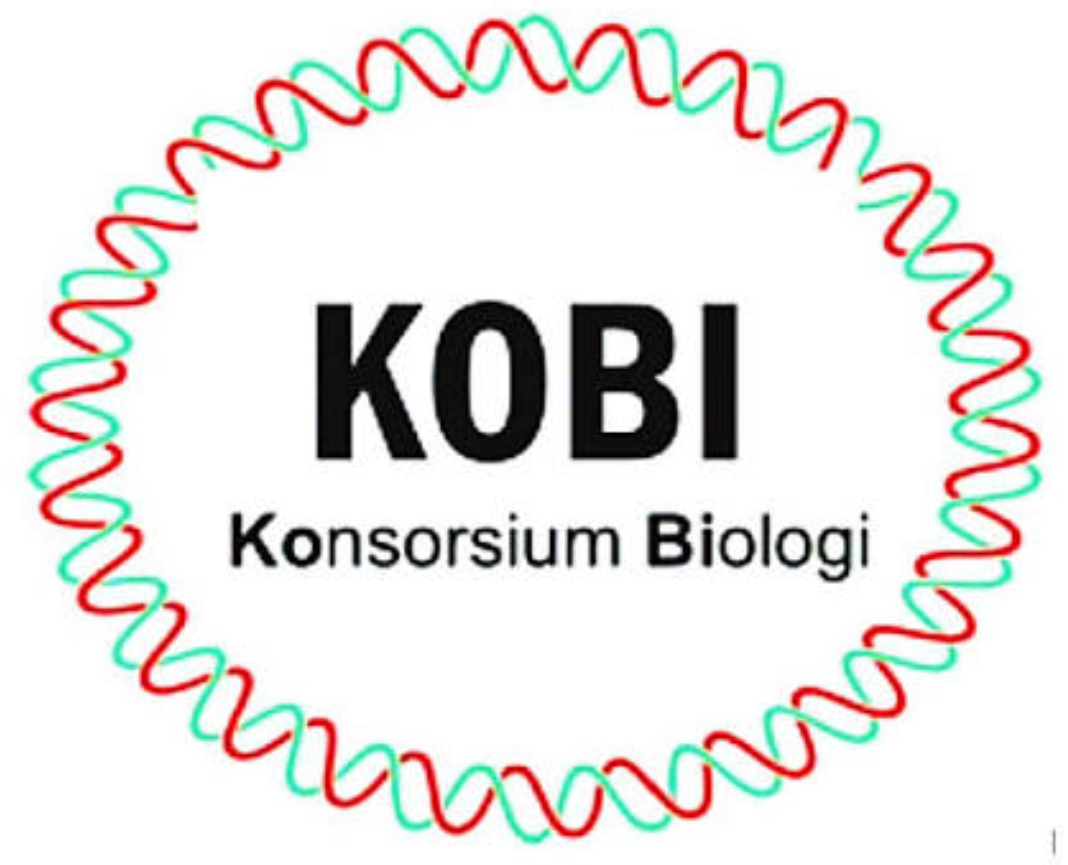Title:
The Development and Potential of Seaweed Tissue Culture
Author:
Abstract
Keywords
Full Text:
PDFReferences
Adharini R I and Hyung Geun Kim. (2016). Growth of Gametophytes and Sporophytes of Grateloupia subpectinata (Rhodophyta) in Culture. Ocean Sci. Journal .51(3):477-483. http://dx.doi.org/10.1007/s12601-016-0043-7
ARLI (Asosiasi Rumput Laut Indonesia). (2020). Seminar Publikasi. Mengelola Ruang Laut Untuk Budidaya Rumput Laut Yang Berdaulat dan Berkelanjutan di Kawasan Segitiga Karang (Coral Triangle Area).
Atmadja, W. S.; Prud'homme van Reine, W. F. (2014) Checklist of the Seaweed Species Biodiversity of Indonesia: With Their Distribution and Classification: Green Algae (Chlorophyta) and Brown Algae (Phaeophyceae, Ochrophyta). Indonesian Institute of Sciences (LIPI).
Atmadja, W.; Prud'homme van Reine, W. F. (2012). Checklist of the seaweed species biodiversity of Indonesia with their distribution and classification: red algae (Rhodophyceae). Coral Reef Information and Training Centre, Jakarta.
Bixler, H.J. & Porse, H. (2011). A decade of change in the seaweed hydrocolloids industry. J. Appl. Phycol., 23: 321-335.
Danandjaja, J. (2014). Metode Penelitian Kepustakaan. Antropologi Indonesia.
Dena, A., Restiani, R., & Aditiyarini, D. (2021). Peningkatan Produksi Saponin pada Kultur Kalus Ginseng Jawa (Talinum paniculatum Gaertn) dengan Penambahan Ekstrak Yeast. SCISCITATIO, 2(1), 35-44.
FAO. (2012). The State of World Fisheries and Aquaculture. FAO Fisheries and Aquaculture Department, FAO, Rome.
Julyasih, K. S. M. (2020). Komponen Fitokimia Makro Alga yang Diseleksi dari Pantai Sanur Bali. In Seminar Nasional Riset Inovatif (Vol. 7, pp. 28-31).
Kartiningsih, Eka Diah. (2015). Panduan Penyusunan Studi Literatur. Lembaga Penelitian dan Pengabdian Masyarakat Politeknik Kesehatan Majapahit Mojokerto.
Lideman, et al. (2016). Petunjuk Teknis Produksi Bibit Gracilaria Laut (Gracilaria sp) Melalui Kultur Spora Pada Tali. Takalar: Kementerian Kelautan dan Perikanan Direktorat Jenderal Perikanan Budidaya Balai Perikanan Budidaya Air Payau.
Lumbessy, S. Y. (2019). Sem-sterile culture of Gracilaria salicornia seaweed (parental) on various media. In AIP Conference Proceedings (Vol. 2199, No. 1, p. 070017). AIP Publishing LLC.
Mo, Vu Thi, Le Kim Cuong, Hoang Thanh Tung, Tran Van Huynh, Le Trong Nghia, Chau Minh Khanh, Nguyen Ngoc Lam, Duong Tan Nhut, (2020). Somatic embryogenesis and plantlet regeneration from the seaweed Kappaphycus striatus. Acta Physiologiae Plantarum . 42:104. https://doi.org/10.1007/s11738-020-03102-3
Mulyaningrum. (2018). Brosur Ilmiah. Mengapa Perlu Kultur Jaringan Rumput Laut?. Balai Riset Perikanan Budidaya Air Payau dan Penyuluhan Perikanan. Edisi 2.
Pangestuti, R.; Getachew, A. T.; Siahaan, E. A.; Chun, B.-S. (2019). Characterization of functional materials derived from tropical red seaweed Hypnea musciformis produced by subcritical water extraction systems. Jurnal Appl Phycol, 31, (4), 2517-2528.
Purita, S. Y., Ardiarini, N. R., & Basuki, N. (2018). Pengaruh Zat Pengatur Tumbuh Jenis Bap Terhadap Pertumbuhan Planlet Sub Kultur Jaringan Tanaman Nanas (Ananas Comosus L. Merr). Jurnal Produksi Tanaman, 5(7).
Rajamuddin, M. A. L., Jaya, A. A., Ridwan, R., & Suryati, E. (2016). Kajian induksi kalus rumput laut Kappaphycus alvarezii untuk produksi embrio somatik. Jurnal Riset Akuakultur, 5(2), 211-219.
Reddy, C. R. K., Jha, B., Fujita, Y., & Ohno, M. (2008). Seaweed micropropagation techniques and their potentials: an overview. Journal of applied phycology, 20(5), 609-617.
Sanusi, Anwar. (2016). Metode Penelitian Bisnis. Jakarta: Salemba Empat.
Simpson, F.J., Shacklock, P.F., Robson, D., & Neish, A.C. (1979). Factors affecting cultivation of Chondrus crispus (Florideophyceae). Proceedings of the 9 th International Seaweed Symposium, p. 509-523.
Sulistiani E, Dinar Tri Soelistyowati , Alimuddin , Samsul Ahmad Yani. 2012. Callus Induction And Filaments Regeneration From Callus Of Cottonii Seaweed. (2012). (Doty) Collected From Natuna Islands, Riau Islands Province Kappaphycus Alvarezii. Biotropia Vol. 19 No. 2: 103 – 114.
Suryati, E., Rachmansyah, R., & Mulyaningrum, S. R. H. (2016). Pertumbuhan spora rumput laut Gracilaria verrucosa secara in vitro dengan penambahan hormon pengatur pertumbuhan pada tanaman. Jurnal Riset Akuakultur, 4(2), 307-312.
Tseng, C.K. (2004). The past, present and future of phycology in China. Hydrobiologia, 512: 11-20.
Wibowo, Arif. (2019). Rumput Laut, Komoditas Penting Yang Belum Dioptimalkan. https://kkp.go.id/djpdspkp/bbp2hp/artikel/14127-rumput-laut-komoditas-penting-yang-belum-dioptimalkan. Accessed on May 27, 2021.
Wijaya, R., Restiani, R., & Aditiyarini, D. (2020). Pengaruh kitosan terhadap produksi saponin kultur kalus daun ginseng jawa (Talinum paniculatum (Jacq.) Gaertn.). In Prosiding Seminar Nasional Biologi (Vol. 6, No. 1, pp. 253-262).
Wiwien Mukti, A., Sugeng, H., & Ahmad, H. (2019). Perbaikan Kualitas Genetik Bibit Rumput Laut Kappaphycus Alvarezii Melalui Teknologi Fusi Protoplas. Jurnal Perekayasaan Budidaya Air Payau dan Laut, 14, 84-91.
Yokoya N S., John A. West, and Agnes E. Luchi. (2004). Effects of plant growth regulators on callus formation, growth and regeneration in axenic tissue cultures of Gracilaria tenuistipitata and Gracilaria perplexa (Gracilariales, Rhodophyta). Phycological Research. 2004; 52: 244–254.
Yong, W. T. L., Ting, S. H., Chin, W. L., Rodrigues, K. F., & Anton, A. (2011). In vitro micropropagation of Eucheuma seaweeds. In 2nd International Conference on Biotechnology and Food Science. IPCBEE (Vol. 7, pp. 58-60).
Yunque, D. A. T., Tibubos, K. R., Hurtado, A. Q., & Critchley, A. T. (2011). Optimization of culture conditions for tissue culture production of young plantlets of carrageenophyte Kappaphycus. Journal of Applied Phycology, 23(3), 433-438.
DOI: http://dx.doi.org/10.31002/ijobe.v4i2.4075
Article Metrics
Abstract view : 0 timesPDF - 0 times
Cited By
Refbacks
- There are currently no refbacks.
Copyright (c) 2022 Indonesian Journal of Biology Education

This work is licensed under a Creative Commons Attribution-NonCommercial-ShareAlike 4.0 International License.

This work is licensed under a Creative Commons Attribution-NonCommercial-ShareAlike 4.0 International License.
indexed by :
Jalan Kapten Suparman 39 Magelang, Jawa Tengah, Indonesia 56116
Phone (0293) 364113 Fax (0293) 362438
Website: http://jurnal.untidar.ac.id/index.php/ijobe









 Abstract views : 0
|
Abstract views : 0
| PDF views : 0
PDF views : 0

